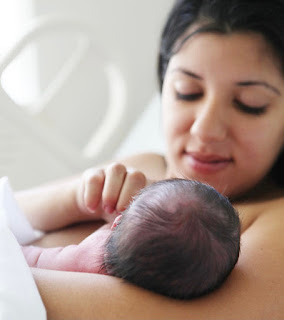Newest Clinical Protocol for Mastitis (2022)
The Academy of Breastfeeding Medicine (ABM) just came out with a new clinical protocol for treating mastitis a few months ago. It is quite extensive, but I want to summarize it here for those nursing moms who have mastitis or believe they may have mastitis. Some of the common advice has changed. To keep this succinct, I will just go over the basic symptoms of mastitis and the current treatment recommendations.
Mastitis is now considered a spectrum of conditions. On one end of the spectrum, we have ductal narrowing which is the updated way of describing a “plugged duct.” If not addressed, this can then lead to inflammatory mastitis, then bacterial mastitis, and then an abscess.
Symptoms:
Ductal narrowing usually presents as a tender, painful, warm, red area on the breast. If the ducts continue to narrow due to inflammation, the situation may progress into inflammatory mastitis. Symptoms can include a painful and swollen breast, redness, fever, chills, and fast heart rate. Bacterial mastitis often presents as the redness getting worse and the painful area becoming more firm in addition to the other symptoms continuing. If the situation progresses onto an abscess, the red and firm area will continue to get worse and there will be a fluid filled area.
Treatment:
Most cases of mastitis resolve without the necessity of antibiotics or interventions besides those mentioned below.
If you start to have symptoms of mastitis, continue to nurse on demand.
If you have a “plug,” it is best not to try to release it by aggressively squeezing or massaging the area. This may lead to trauma to the tissue.
It is best not to pump (or pump extra if you usually pump) to try to empty the breast. This may make things worse. If you are feeling especially full, you can hand express a little to help soften your breast.
Avoid using nipple shields.
Wear an appropriately fitting supportive bra.
Deep tissue massage of the breast is not recommended, because it can increase inflammation and swelling. A possible alternative is Lymphatic Massage which has a much more gentle touch to it.
Also avoid saline soaks.
There is no need to sterilize bottles, pumps, or other items, because mastitis is not contagious.
To reduce inflammation, ask your physician if it is okay for you to take an over the counter NSAID medication. Also, ask your physician about an over the counter medication for pain.
Ice can be applied every hour to reduce inflammation, too.
Five to ten grams daily of oral sunflower or soy lecithin has been shown to reduce inflammation. Lecithin is routinely suggested to nursing moms who have recurrent bouts of mastitis.
If oversupply is contributing to your mastitis, treat that to help reduce the inflammation and prevent future bouts of mastitis.
Several studies did find that probiotics were helpful in preventing and treating mastitis, but more research needs to be done before it becomes a routine recommendation.
If you have a visible “bleb,” on your nipple, the best treatment is oral lecithin and the “application of a topical moderate potency steroid cream such as 0.1% tri- amcinolone” according to ABM. Just wipe it off before nursing your baby.
If you are not getting better:
If the above home treatment options have not improved things or you are still have persistent symptoms such as fever and/or fast heart rate after 24 hours, call your physician. In this case, it is possible the mastitis has become bacterial and will necessitate an antibiotic.
If you are having symptoms of an abscess, it is also very important to see your physician. Your physician can use both clinical observation and even ultrasound to help diagnose it. If it is determined that you have an abscess, the area will need to be drained.
If you are concerned about any symptoms you are having, I encourage you to contact a lactation consultant or your physician for advice.

Comments
Post a Comment